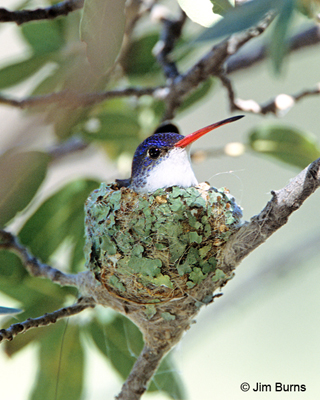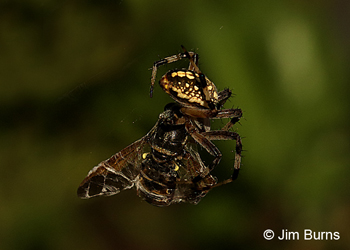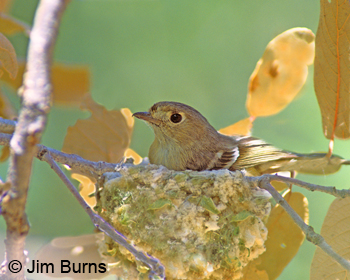|
Hutton's Vireo on nest |
No worries. I grabbed the vacuum, detached the sweeper head, put the nozzle directly on the table leg, and hit the switch. The web split but the vacuum’s suction was not strong enough to detach the original connective end from the table. As I pulled the nozzle back, the web’s loose end just came streaming back out of the tube. Somewhere I know spider woman must have been laughing at me.
It instantly reminded me why some of our birds, particularly vireos and hummingbirds, instinctively know to use spider webbing to bind their nesting materials, various kinds of plant fiber, together into tidy cups. Because spider silk is sticky, these nests are impervious to the vagaries of wind and weather and because the webbing is bend-but-won’t-break flexible, the nests are expandable to accommodate nestlings’ growth. This second application of silk for nest construction is often overlooked and underappreciated. We are not the only species to upsize as families grow.
In an adult lifetime of birding I have observed many vireo and hummingbird nests and always marveled at the intricacy of their design, but really anyone who has ever been the first on a dewy morning down a wild and narrow pathway through a forested area should not be surprised. The chances of the early hiker intersecting a cross trail spider web are high, and if long hair, beard, or even beard stubble celebrating a weekend away from civilization are involved, getting clear of the silk will take several minutes. This scene becomes longer and more frantic and comical if it evokes the certainly that the unseen webmaster is entangled somewhere on the hiker’s face or head.
It is assumed that the moss, bark fibers, and grasses used in nest construction are interwoven first and then bound together at the end with silk much as the spider itself spools webbing around unwitting prey which happens into the web. In fact, though, the sticky webbing is plaited in and on to each layer of material to “glue” them together. Often a final layer of lichen, hard and camouflaging, forms the outer shell. Indeed, occasionally a careless hummer will be caught up in harvesting the silk and become a spider’s victim itself.
Next time you find a small cup nest in breeding season, examine it closely, perhaps even with a hand lens, and appreciate the variety of materials and how many trips it took the builders to construct it. Vireos and hummers need, on average, three to ten days for nest construction, sometimes much longer early in the season. It took the Marbled Orb Weaver in the accompanying photo less than one minute to wrap up the doomed bee—spider silk in its original and awesome application.

